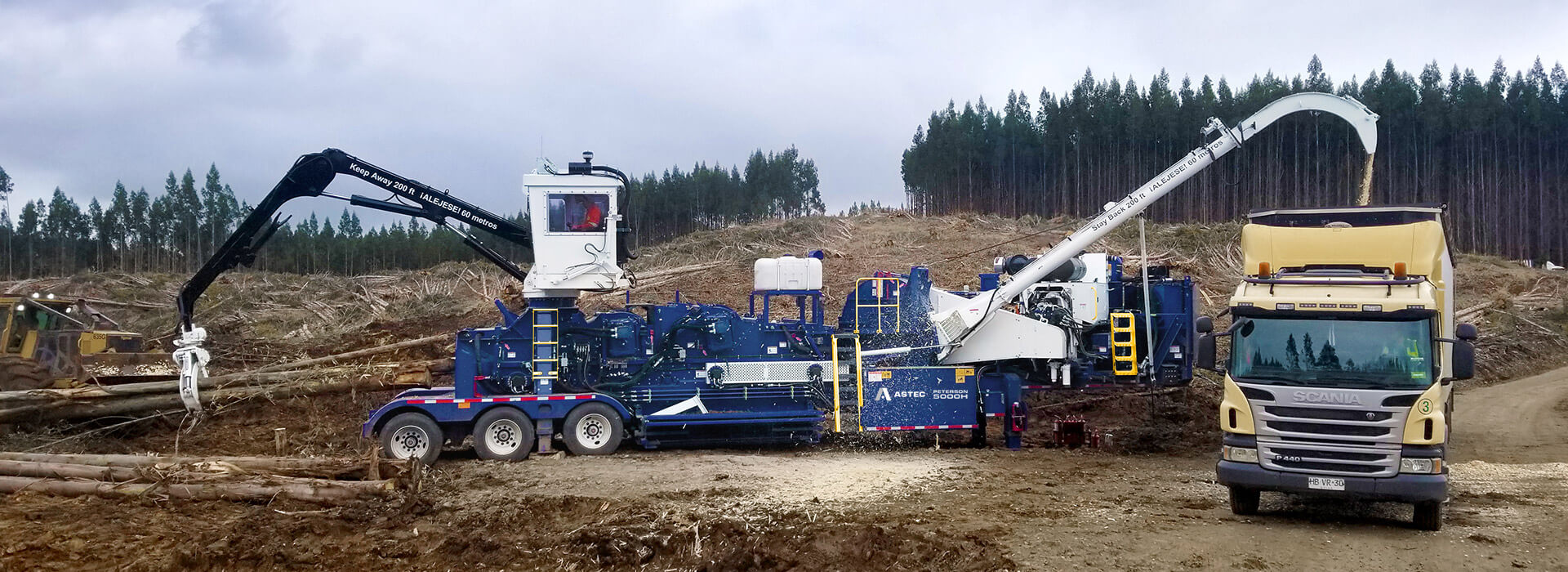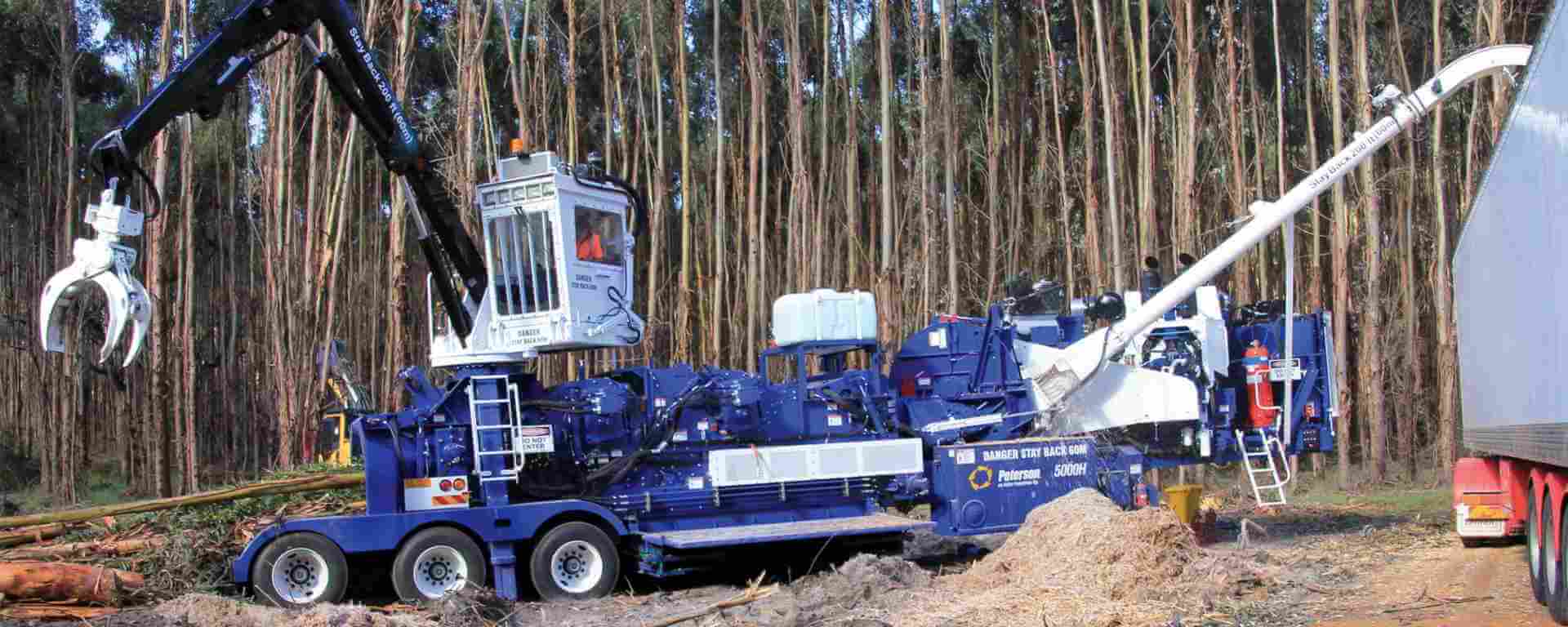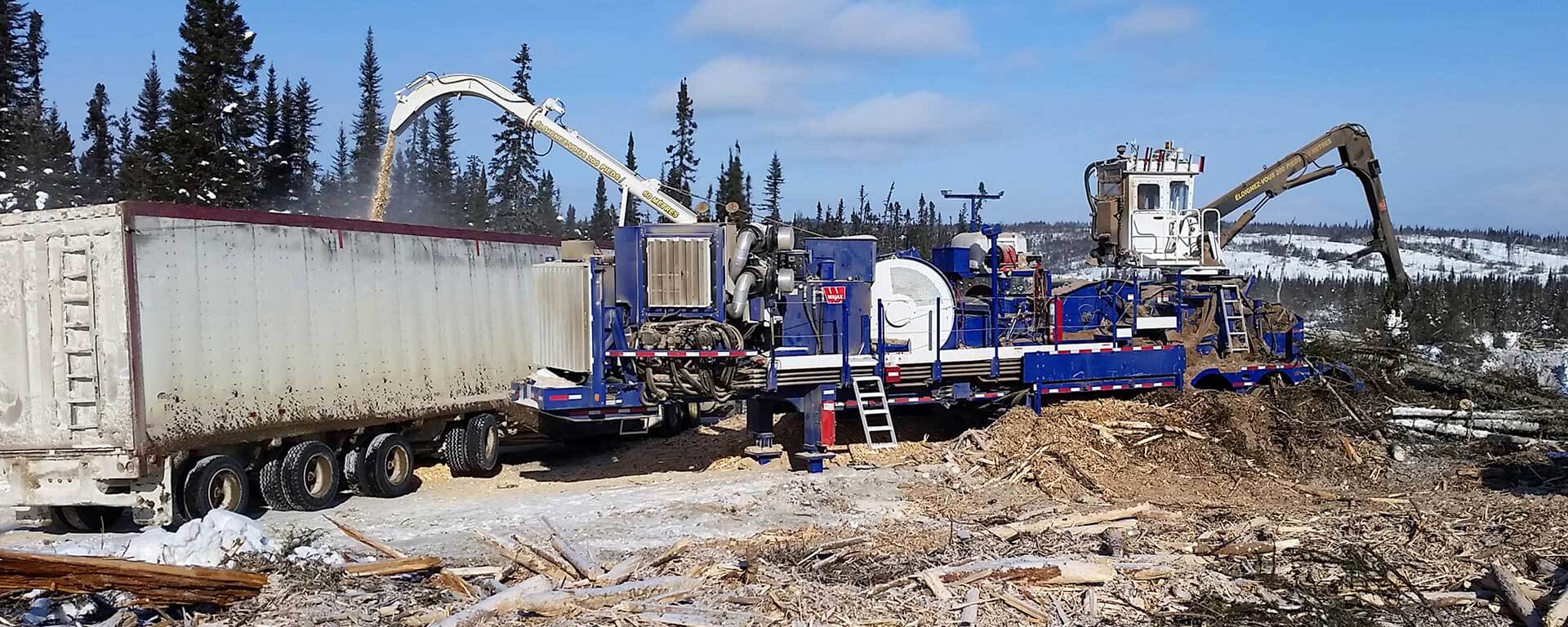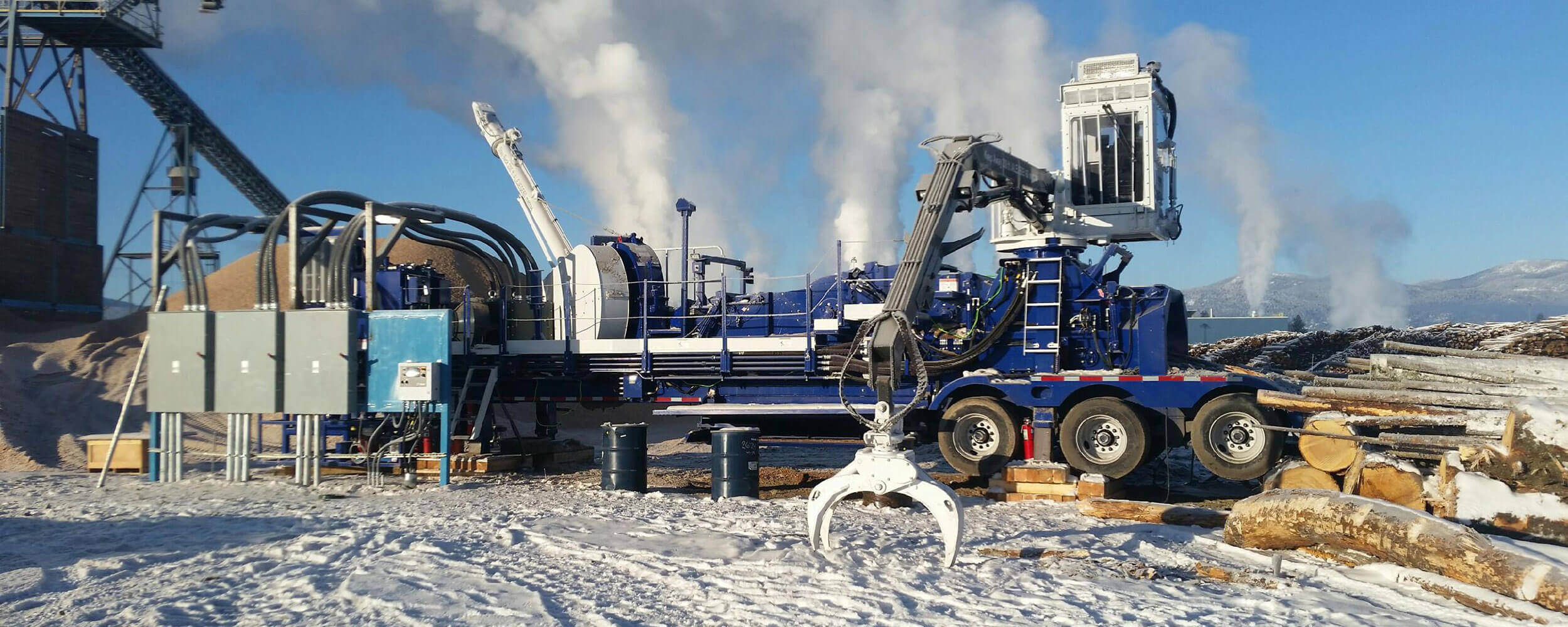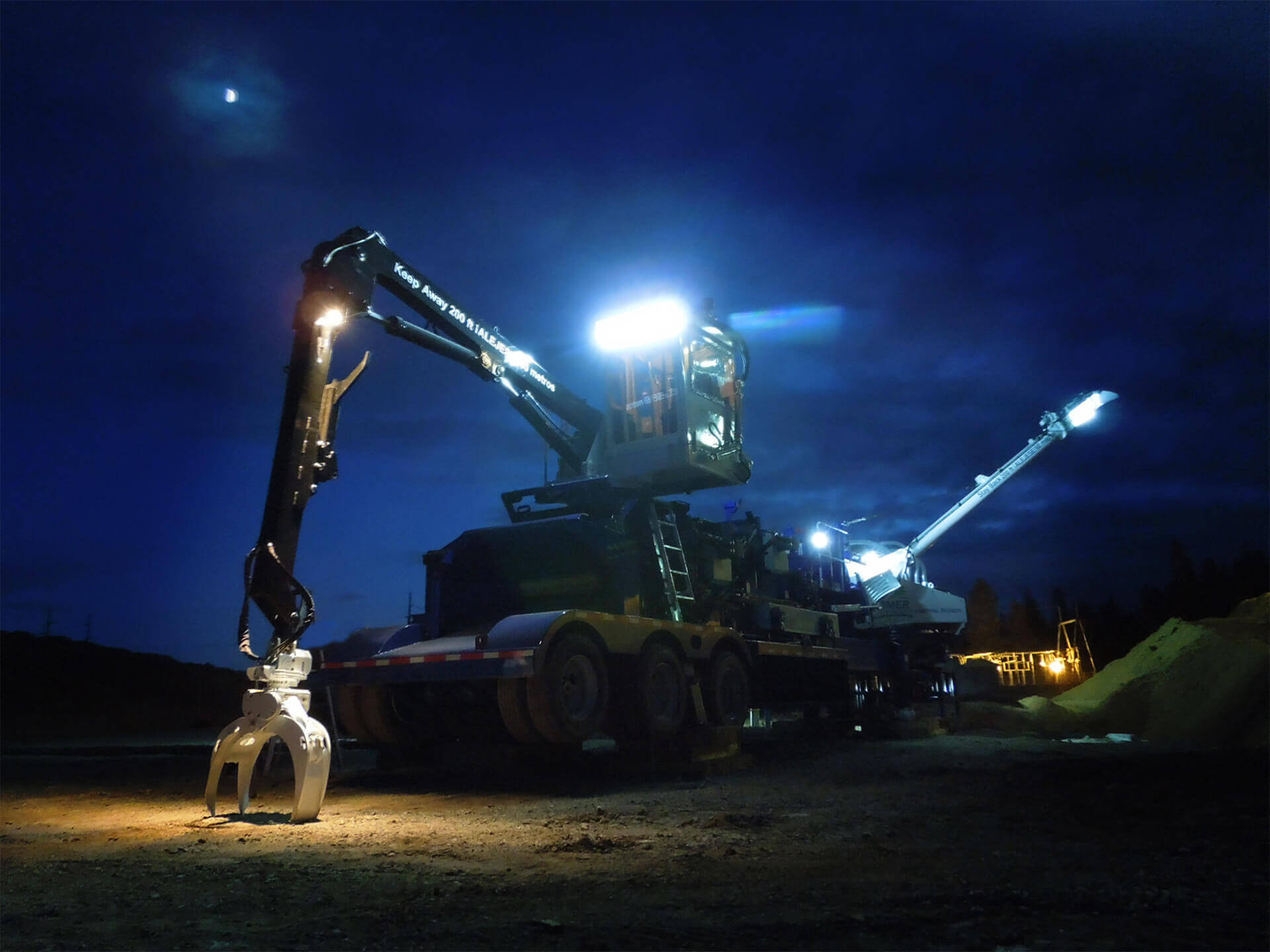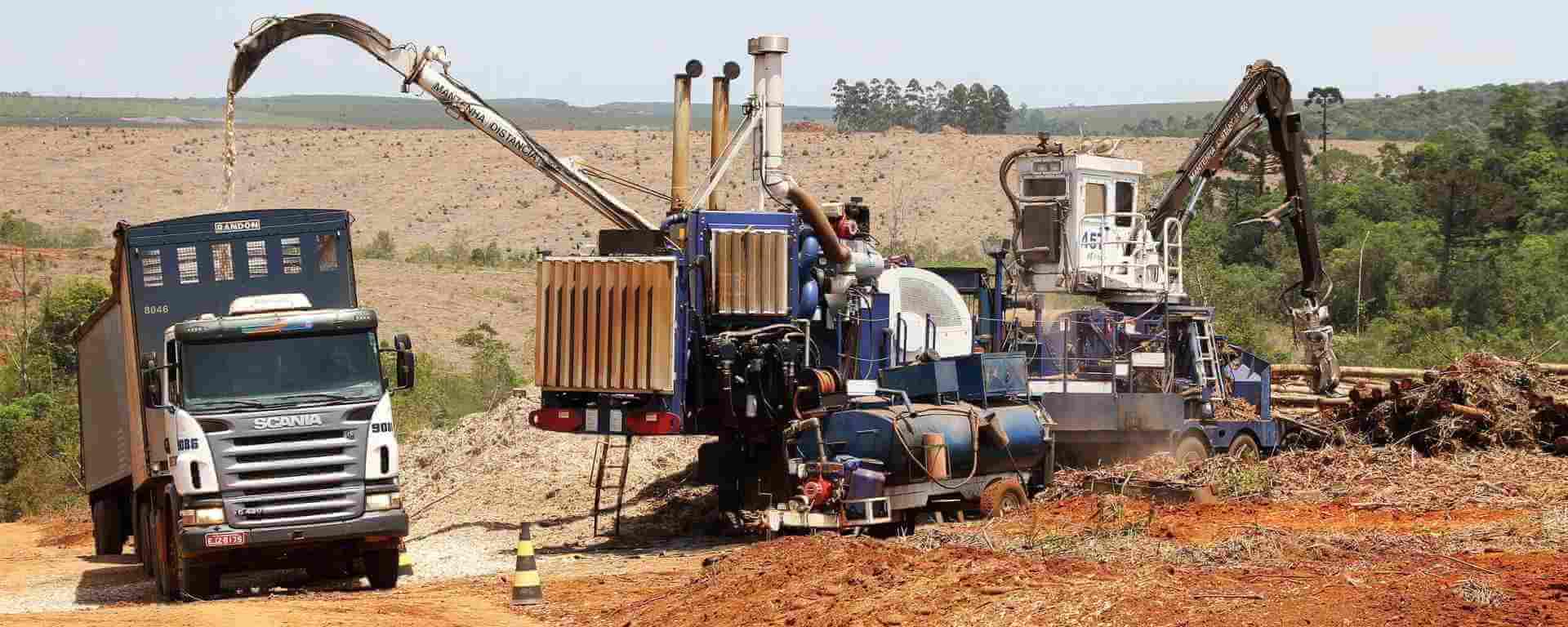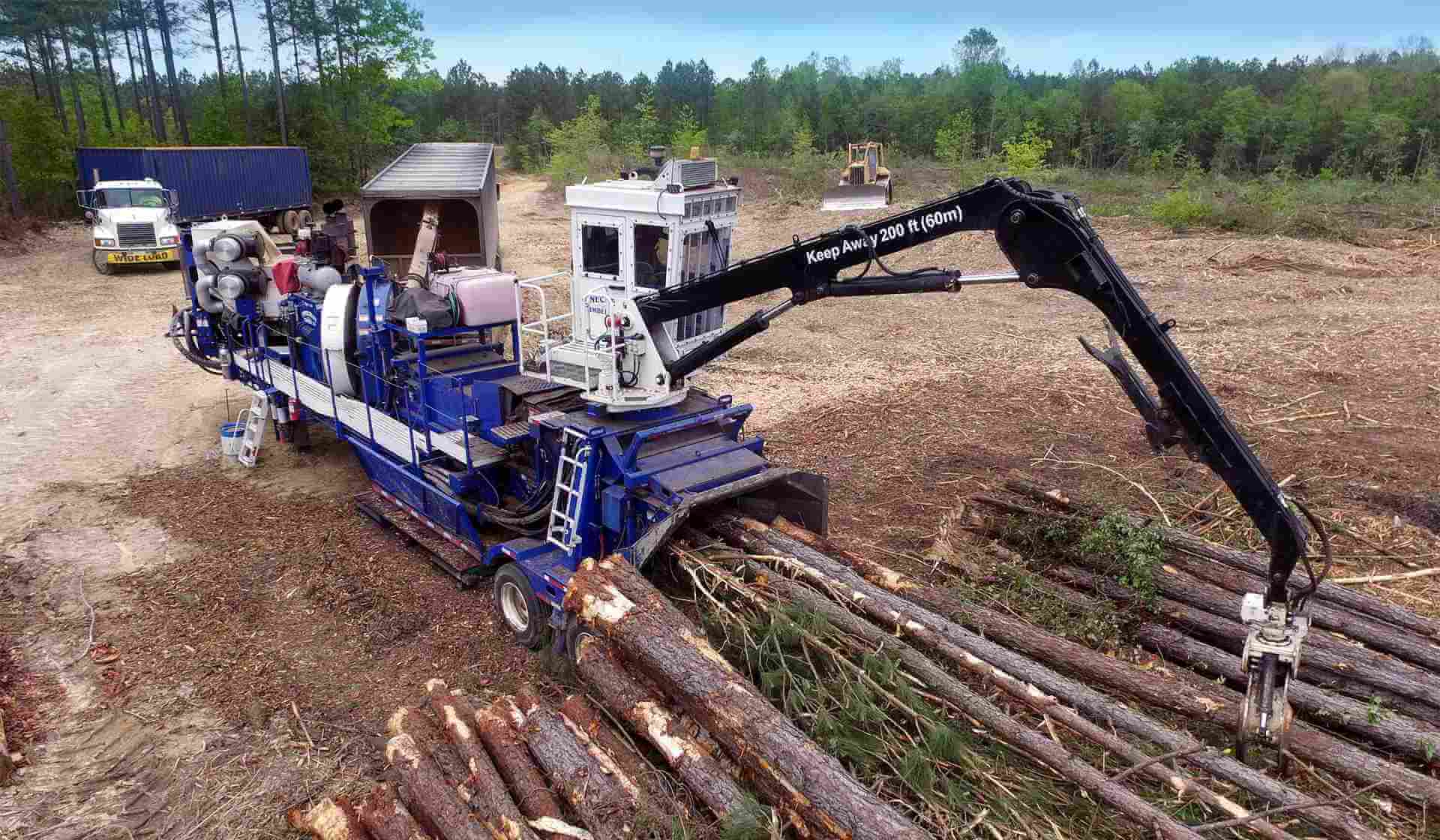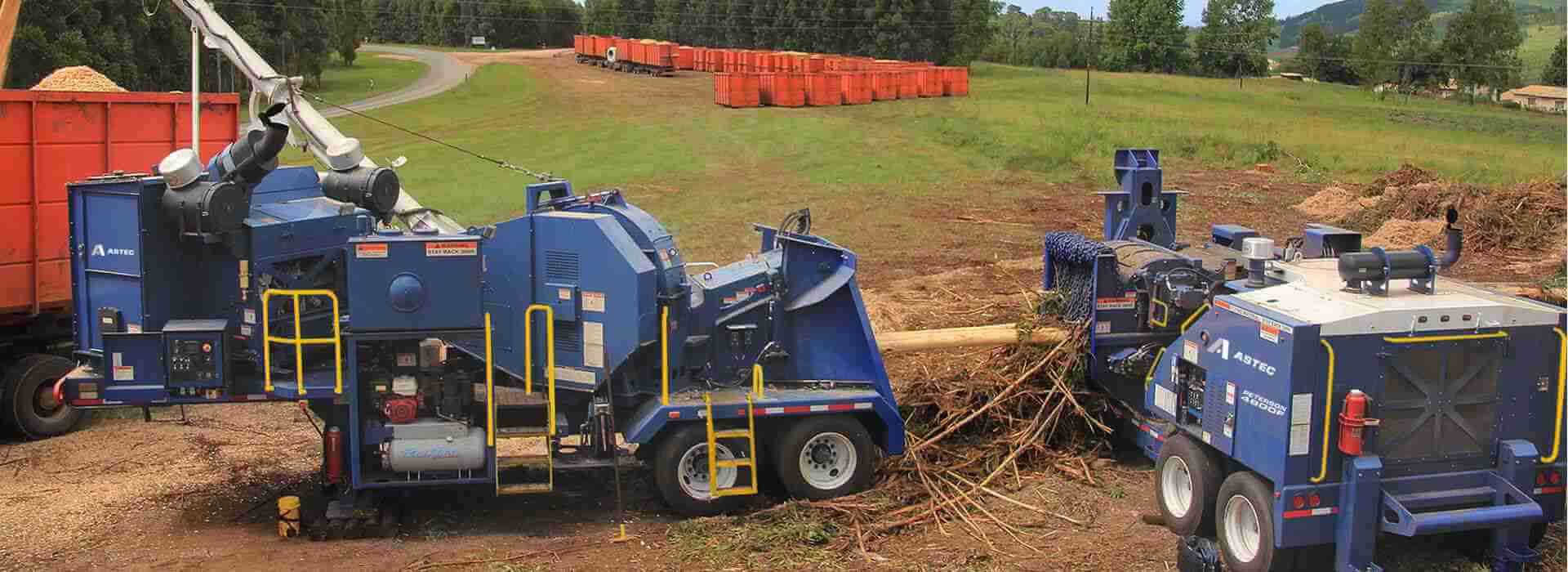Pulp & Paper Chips
Pulp and paper chips are primarily manufactured by disc chippers after some form of debarking. Pulp chips are made from softwood and hardwood trees but are segregated at paper mills and processed separately. Fiber requirements for different paper types determine whether softwood or hardwood is used exclusively or if a blend of softwood and hardwood fiber is required. Chips will be pulped either chemically (continuous or batch digesters) or using a thermo-mechanical process (TMP).
Common sources for pulp and paper chips include mill wood yard chips, in-field clean (flail) chips and sawmill residual chips. An in-field clean chipping system has many advantages over a conventional round wood harvest where wood is cut and transported to a central site for debarking and chipping. These advantages spanning the total supply chain and include:
- Increased yield vs. round wood
In-field chipping results in an increase in harvested and delivered tons per acre; up to 30% in hardwood and up to 15% in softwood. Whole trees are fed into the in-field chipping system versus being topped and limbed for road transport of round wood. As a result, the upper stems and large limbs are debarked and chipped providing for more yield per acre. Additionally, in-field crews can harvest and chip stems smaller than those typically utilized in round wood logging and blend these stems into the feed going into the in-field clean chipper. This results in more revenue per acre and also reduces the frequency of moves over the course of a year. - In-field chipping results in cleaner site
More wood is utilized (limbs, large tops and small stems chipped versus being left on site) as the land is being harvested and left clear of debris. This can be a buying advantage as many landowners want the clean site left from in-field chip harvesting. Additionally, savvy landowners can often negotiate lower reforestation costs as tree planting crews will accept lower rates for in-field chip harvested sites. - Increased transport payload
Efficient chip loading and well-designed chip vans make it possible to realize increased payloads, up to three tons per load, with chips versus round wood (conventional 25-ton round wood loads). - More ready-to-use fiber per load
With round wood, 8 to 12% of the wood purchased is lost at the mill site to debarking. With in-field clean chipping, the bark is left in the woods and you only buy usable pulp and paper chips for your process.
Pulp and paper chips must meet mill-specific requirements for length, thickness and overall size distribution. In addition to sizing, they must also meet mill requirements for allowable bark and contamination (dirt, rot or decayed wood, fire char and other inorganic material such as plastics and metal).
